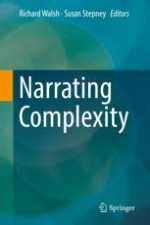2018 | OriginalPaper | Buchkapitel
4. When Robots Tell Each Other Stories: The Emergence of Artificial Fiction
verfasst von : Alan F. T. Winfield
Erschienen in: Narrating Complexity
Aktivieren Sie unsere intelligente Suche, um passende Fachinhalte oder Patente zu finden.
Wählen Sie Textabschnitte aus um mit Künstlicher Intelligenz passenden Patente zu finden. powered by
Markieren Sie Textabschnitte, um KI-gestützt weitere passende Inhalte zu finden. powered by
